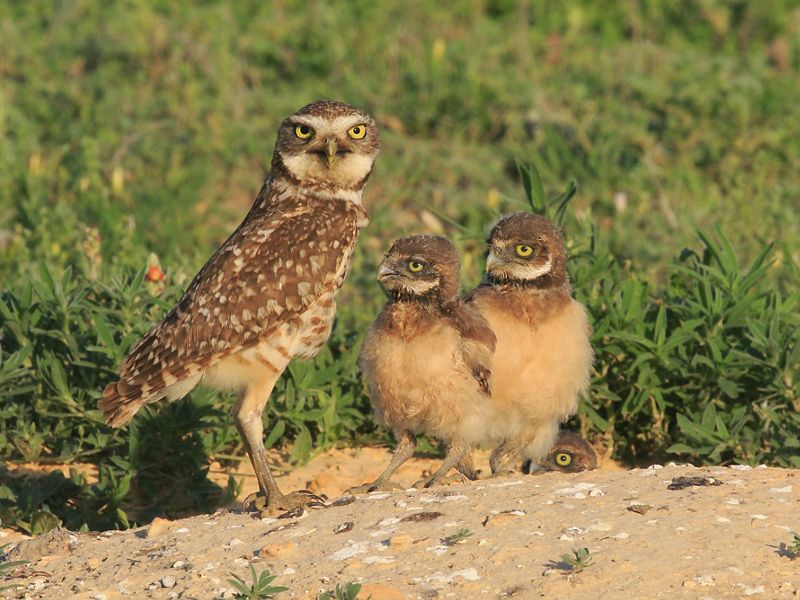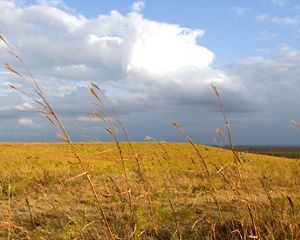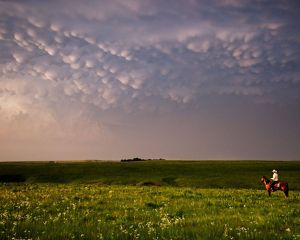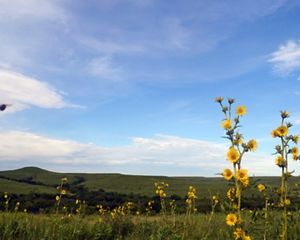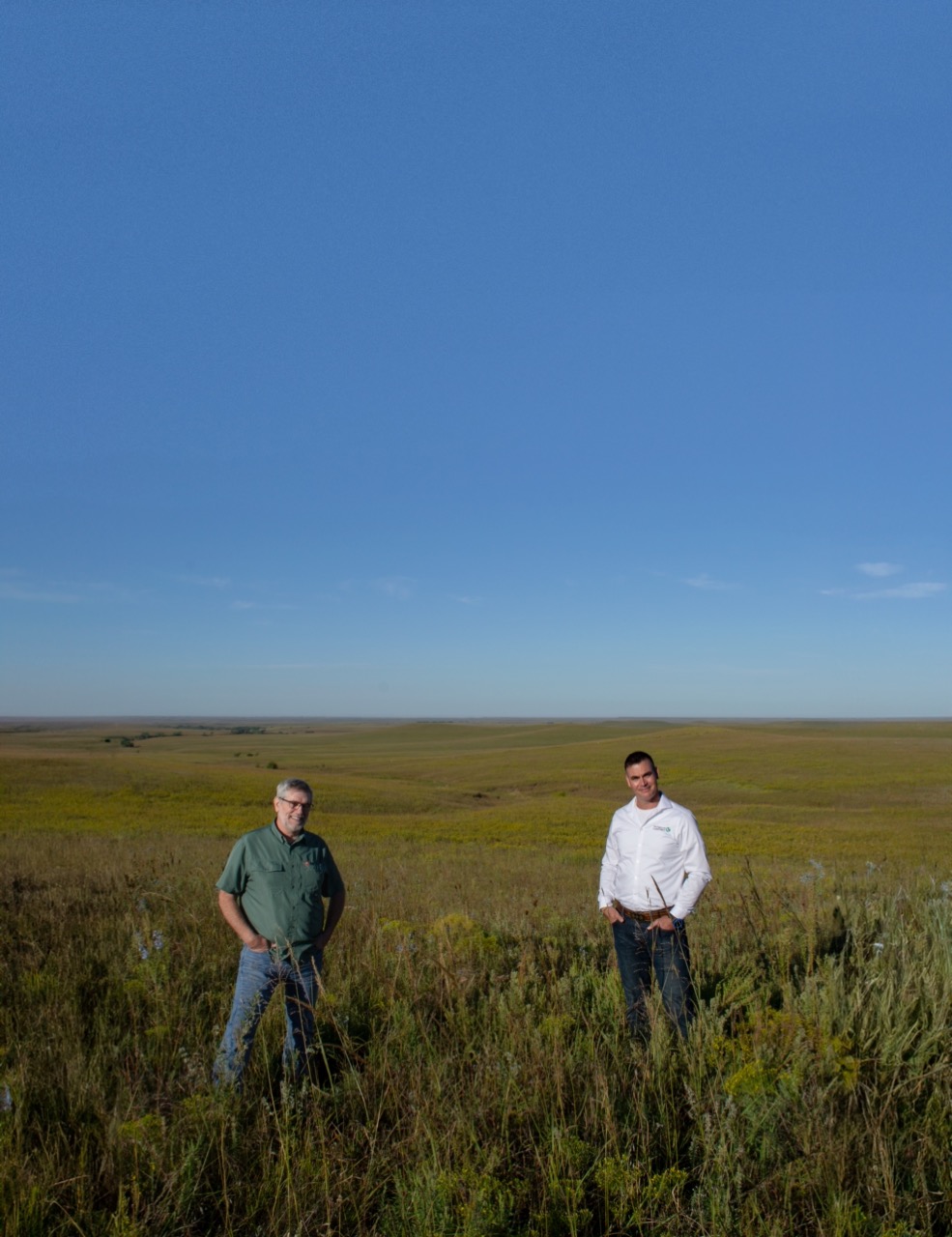
Kansas Talent to Lead Region-wide Programs
We’ve always said that nature doesn’t abide by things like fences and geopolitical boundaries. Being able to work across state lines and at the scale of entire ecosystems is one reason The Nature Conservancy (TNC) is so effective. For decades, TNC staff in Kansas have partnered across state lines to achieve larger conservation goals. From protecting our prairies in the Flint Hills, guiding the science team for the Mississippi River Basin, to creating the blueprint for renewable energy siting across the globe, staff in Kansas are ensuring TNC’s mission is not hindered by artificial barricades.
So, it comes as no surprise that our talented and well-respected staff have once again been tapped to accelerate our conservation impact in order to meet critical 2030 goals. This summer, Kansas State Director Ben Postlethwait was named as TNC’s Great Plains division director, overseeing work in the states of Arkansas, Iowa, Kansas, Minnesota, Missouri, Nebraska, North Dakota, Oklahoma, South Dakota and Texas.
“When I started my career with TNC last year, I never could have foreseen such a shift,” shared Postlethwait. “I’m humbled and honored by this opportunity to collaborate across state business units to achieve our big conservation goals. We are one team, and we’re all in this together.”
Brian Obermeyer, former Kansas director of land protection and stewardship and our first Flint Hills Initiative lead, has been promoted to lead high priority grassland conservation for the Great Plains. Grassland focal areas include the Flint Hills, the Northern Great Plains, and the Southern High Plains. Fittingly, the last two extend into states in TNC’s Western division.
“I plan to take advantage of the great momentum driving TNC’s grassland conservation work,” says Obermeyer. “Kansas is already at the heart of much of it, and I will ensure we remain committed to tangible, lasting results for one of the most imperiled habitat types on Earth.”
Long-time TNC staffer and former Oregon State Director Jim Desmond is acting as interim Kansas director to bridge the gap between Ben’s transition to division director and the hiring of a new Kansas state director who is expected to start in early 2025.
New Protection at Preserves

Southern High Plains & Great Bend Sand Prairie
Leveraging Our Lands
This summer, we made headway toward our protection goals in two priority landscapes: the Southern High Plains and Great Bend Sand Prairie.
The Nature Conservancy acquired 375 acres adjacent to Little Jerusalem Badlands State Park in Logan County. A mix of Niobrara chalk bluffs, native prairie, and cropland, this property was ripe for energy development and conversion. Now, it’s permanently protected. In total, Smoky Valley Ranch has grown to nearly 19,000 acres.
Thanks to our partners at Ducks Unlimited, we also welcomed over 600 acres to our Cheyenne Bottoms preserve, bringing our total protection to 8,650 acres.
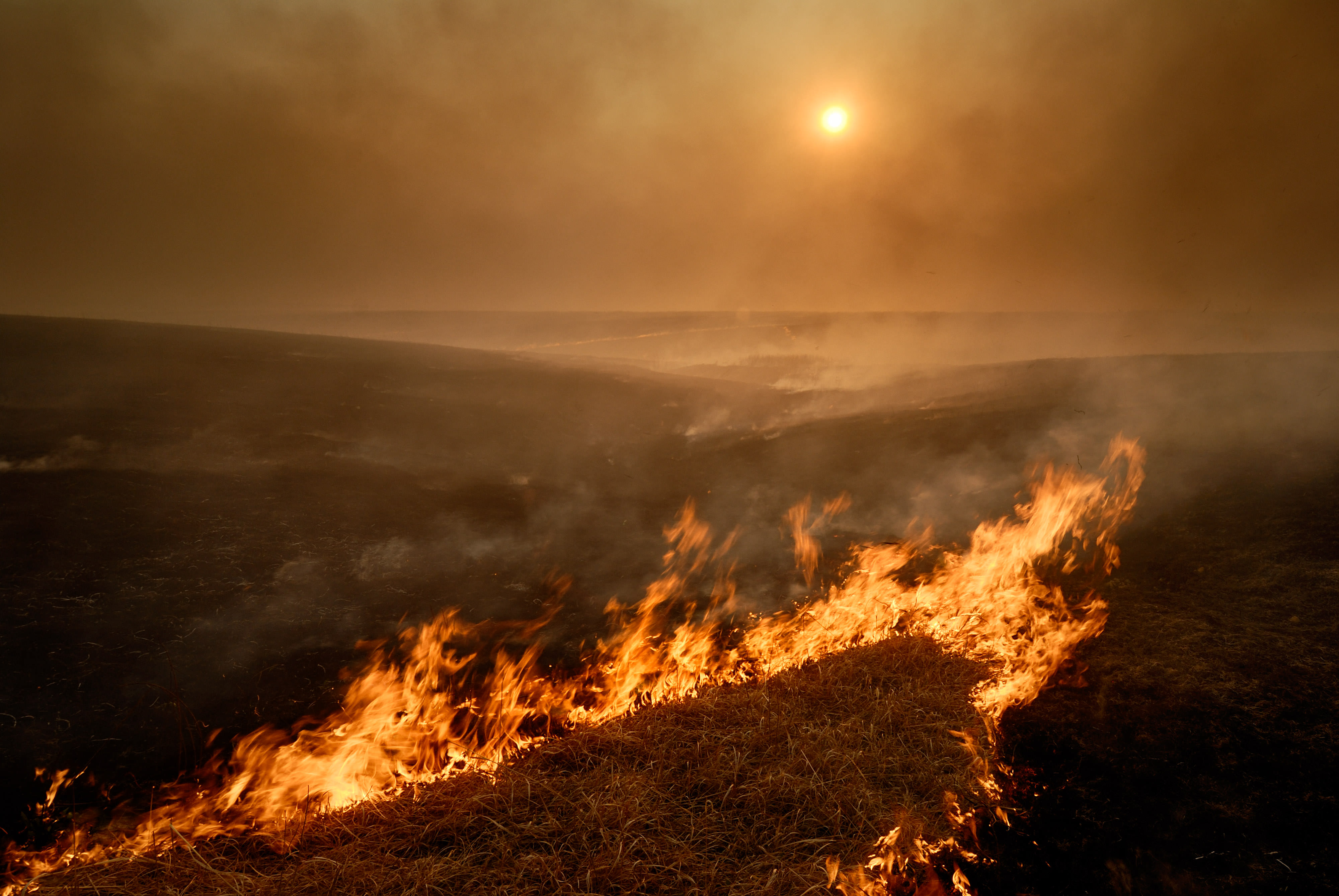
Flint Hills & Beyond
A Standout Year for Prescribed Fire
Grasslands evolved with fire, both natural wildfires and intentional use by Native caretakers before colonization. Today, prescribed fire remains a crucial tool for maintaining and enhancing prairie health. The Nature Conservancy has been a leader in using prescribed fire for more than 60 years to keep aggressive invasive plants at bay, enrich soil health and support thriving ranching economies.
Throughout the year, our highly trained burn crews can be seen preparing for and setting prescribed fires on TNC preserves. They also help private landowners and our conservation partners, like the National Park Service and Konza Prairie Biological Research Station, burn at the right place, right time of the year and right frequency through the co-creation of burn plans, equipment sharing and technical support.
“Woody plant encroachment and herbaceous invasive species pose critical threats to the resilience of Kansas prairies. It has never been more important to work with our conservation partners to ensure frequent fire to maintain open grassland,” says Flint Hills Initiative Manager Tony Capizzo. We’re working to do just that. The Kansas chapter has one of the most impactful fire programs at the Conservancy, burning approximately 37,800 acres last year—more than any other state.
Make a Difference in Kansas
You can feel confident that your donation in support of nature will make a difference by putting you at the center of critical conservation projects underway here in Kansas and all across the globe.
Hope For Grasslands
Imagine a Kansas where grasslands flourish:
The land, once depleted, now pulses with life. Native species reclaim their habitat, ensuring a resilient ecosystem for future generations. Healthy prairies capture carbon in the soil, slowing the impact of a changing climate and creating a healthier future for us all. Ranchers are finally recognized as proud environmental champions—their continued stewardship and adoption of conservation practices not only sustains their livelihoods, but also secures a legacy of abundance.
Our current reality is starker. Grasslands are the least protected habitat on earth. They are rapidly disappearing due to urban sprawl, woody invasion, conversion to cropland and energy development. Over 30 years, a rancher in western Kansas might expect to make about $17 per acre, per year, to keep the grass “green side up”. Compare that to the potential profits of developing the land: $76/acre per year if plowed and converted it to crops, $167/acre per year to turn it into a ranchette or feedlot, as much as $800/acre per year to turn it into a solar farm. When landowners are asked to wrestle with these economic scenarios, it’s no surprise why we continue to lose grasslands every day. But The Nature Conservancy has hope and the ecosystems services that enrich our lives have value.
Through our Generational Grasslands program in the Southern High Plains, we are working to conserve grasslands at scale by focusing resources into the few remaining grassland cores, centering the needs of communities and breaking down barriers through creative solutions that ensure both people and nature thrive.
Quote: Matt Bain
Growing up, every kid learned about the plight of the rainforest, but no one told them about the world’s most threatened terrestrial system in their own backyard. Grasslands, and those who care for them, deserve attention.
Grasslands store immense quantities of carbon underground in the soil and keep it from being released into the atmosphere. But if a prairie is plowed, much of that carbon is released. Avoiding the conversion of grasslands in places like the Flint Hills, supporting ecologically-sound fire practices and restoring grasslands where they have been lost are important natural climate solutions. Combined with reducing reliance on fossil fuels and accelerating well-sited renewable energy, natural climate solutions offer immediate and cost-effective ways to tackle the climate crisis—while also addressing biodiversity loss and supporting human health and livelihoods. Learn more about natural climate solutions here.
Sustainable Rivers
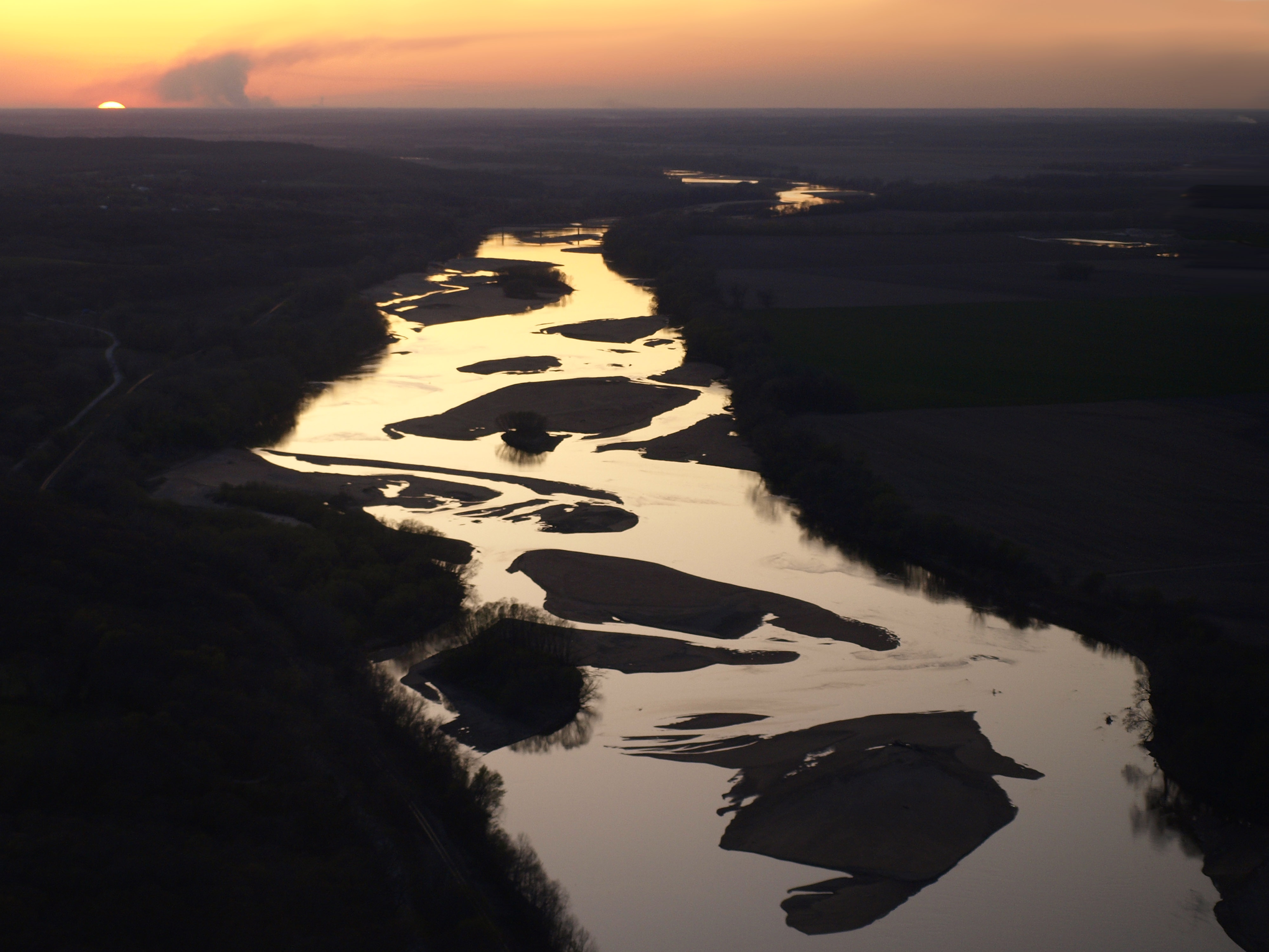
Statewide
Modernizing Dam Operations to Benefit Wildlife
The Sustainable Rivers Program, a partnership between the Nature Conservancy and the US Army Corps of Engineers, seized an opportunity to implement environmental flow releases on the Kansas River and the Osage River in 2024. Water was discharged from the Tuttle Creek Lake reservoir north of Manhattan into the Kansas River to cue native fish spawning, and the release was tapered off more slowly than usual to avoid leaving freshwater mussels stranded on the banks of the river. Similar releases were completed from Pomme de Terre reservoir on the Osage/Marais des Cygnes system. TNC and partners will continue to implement environmental flows in 2025 and beyond, and monitor responses in fish, mussels, and river habitat.
The Sustainable Rivers Program began in 2002 with eight rivers and has grown to 44 river systems across the nation, influencing 12,079 miles of U.S. waterways and 90 associated reservoirs and dams. With just two percent of our nation’s three million miles of rivers and streams still free-flowing and undeveloped, the survival of our freshwater systems hinges on our ability to reduce the negative impacts of river infrastructure.
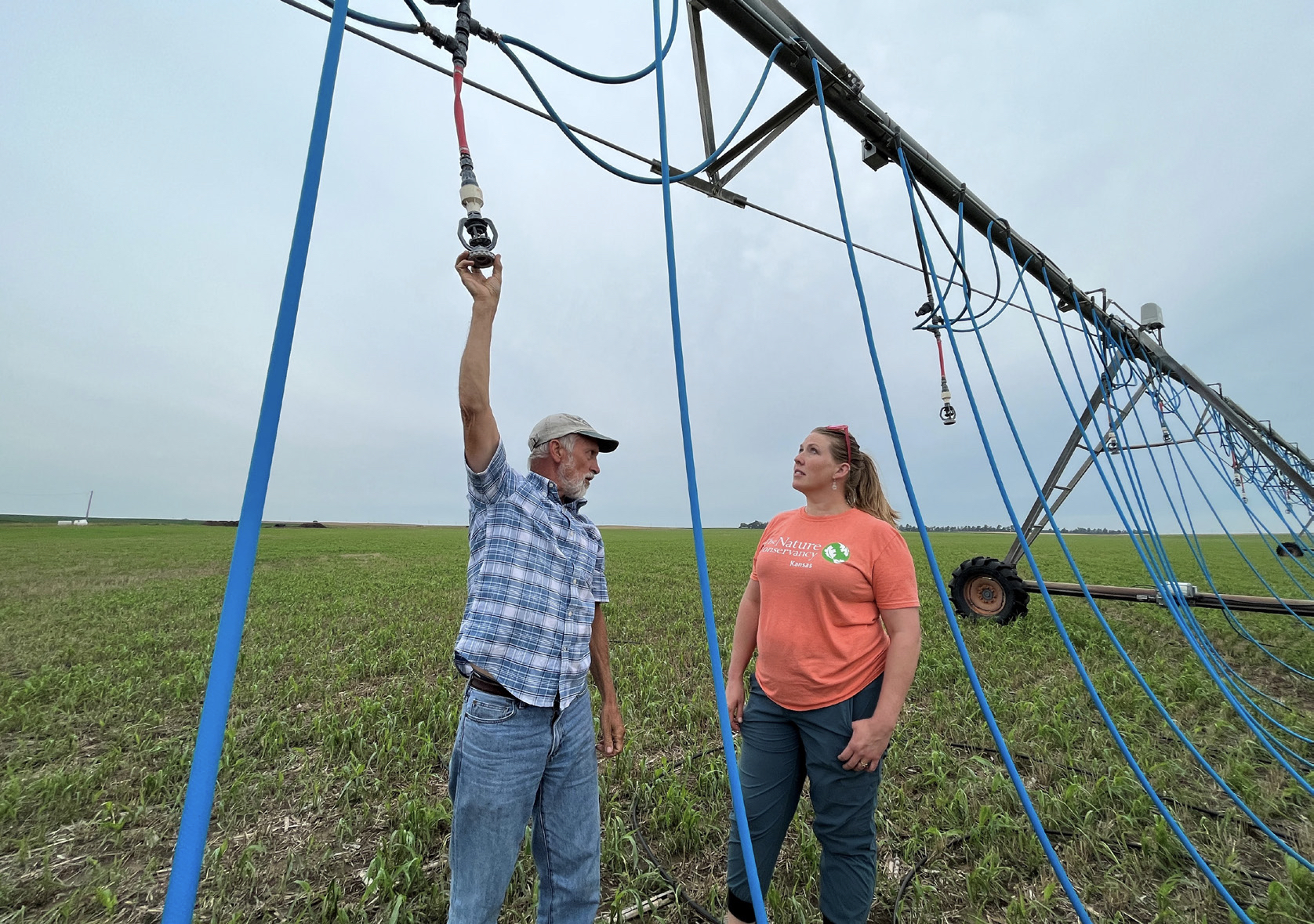
Statewide
Innovative Water Savings Ripple Across Western Kansas
It’s a problem with no easy solution: people and nature need water, and sometimes there is not enough to go around. Kansas wetlands like the Quivira National Wildlife Refuge are fed by groundwater and stream flows, supporting thousands of migrating birds and other species each year. Farmers rely on the same groundwater—the Great Bend Prairie Sand Aquifer—to grow crops and fuel the local economy.
The Nature Conservancy works with farmers, local leaders, state agencies, federal partners and others seeking solutions that support both natural and human communities around Rattlesnake Creek. For the last four years, TNC has led an irrigation efficiency project to reduce the amount of groundwater pumped and used for crop fields while still maintaining harvest size and profitability. We provided farmers with technical assistance, cost share for more efficient irrigation technology and other voluntary, incentive-based practices such as invasive tree removal.
In August, the Fish & Wildlife Service announced that, thanks to the combined efforts of multiple programs, water use reduction targets for 2024 were exceeded by more than 17%. Perhaps even more exciting, the Kansas Department of Agriculture received a $25 million federal grant to replicate our irrigation efficiency program across all five of the state’s groundwater districts. We’re proud to have created the model that will help conserve water across the state for years to come.
Supporting Biodiversity
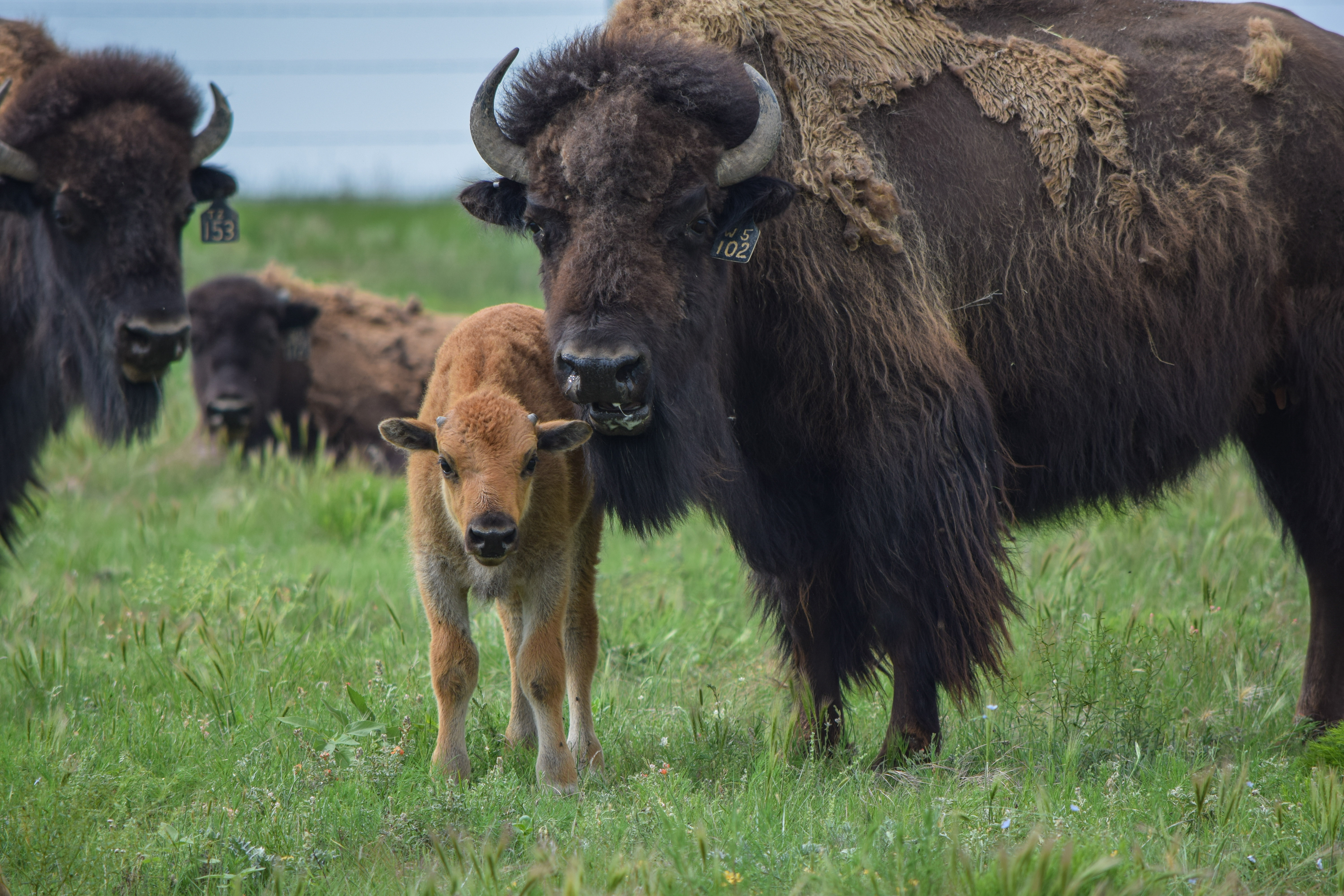
Bison Restoration
TNC’s buffalo herds (also known as the American bison) produce approximately 1,500 buffalo in need of new homes every year. By returning some of these buffalo to tribal lands, we are healing and restoring a web of natural relationships that has been broken for hundreds of years. Eighteen buffalo from TNC preserves in Kansas were transfered in late 2023, and we will transfer additional buffalo after our roundup in November 2024.
Each buffalo herd plays a vital role within the community to which it’s transferred. In some cases, preliminary herds are returning to lands for the first time in more than 100 years. Other times they expand existing herds, diversify genetics and uplift community food sovereignty initiatives, all essential in rebuilding buffalo lifeways.
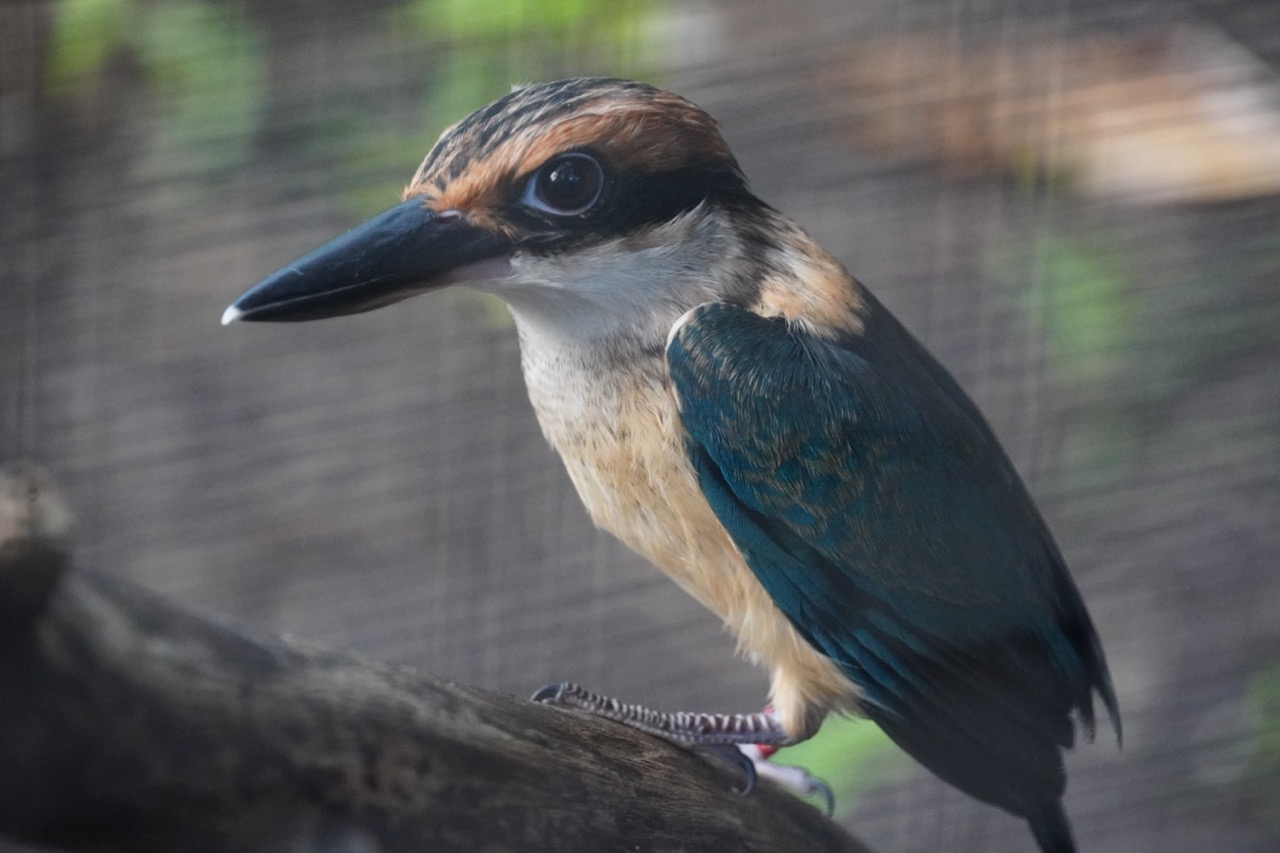
Returning a Species to the Wild
In September, nine extinct-in-the wild sihek (also known as Guam kingfishers) were released at their new home at TNC’s preserve and research station on Palmyra Atoll, 1,000 miles south of Hawai‘i. The released sihek have a special Kansas connection: they were hatched and hand-reared at a quarantine rearing facility at Wichita’s Sedgwick County Zoo. There, specialized bird keepers worked around the clock to feed, weigh and monitor the chicks as they grew from hatchlings to young adults.
To ensure success, a skilled TNC avian team will closely monitor the population for the months to come. It is an inspiring demonstration of the power of partnership in turning the tide of extinction – and an exciting stepping stone to the eventual return of this iconic species back to Guam.
Interested in learning more? Watch Flight of the Sihek to follow the birds from Wichita to their release on the remote Pacific island of Palmyra Atoll.
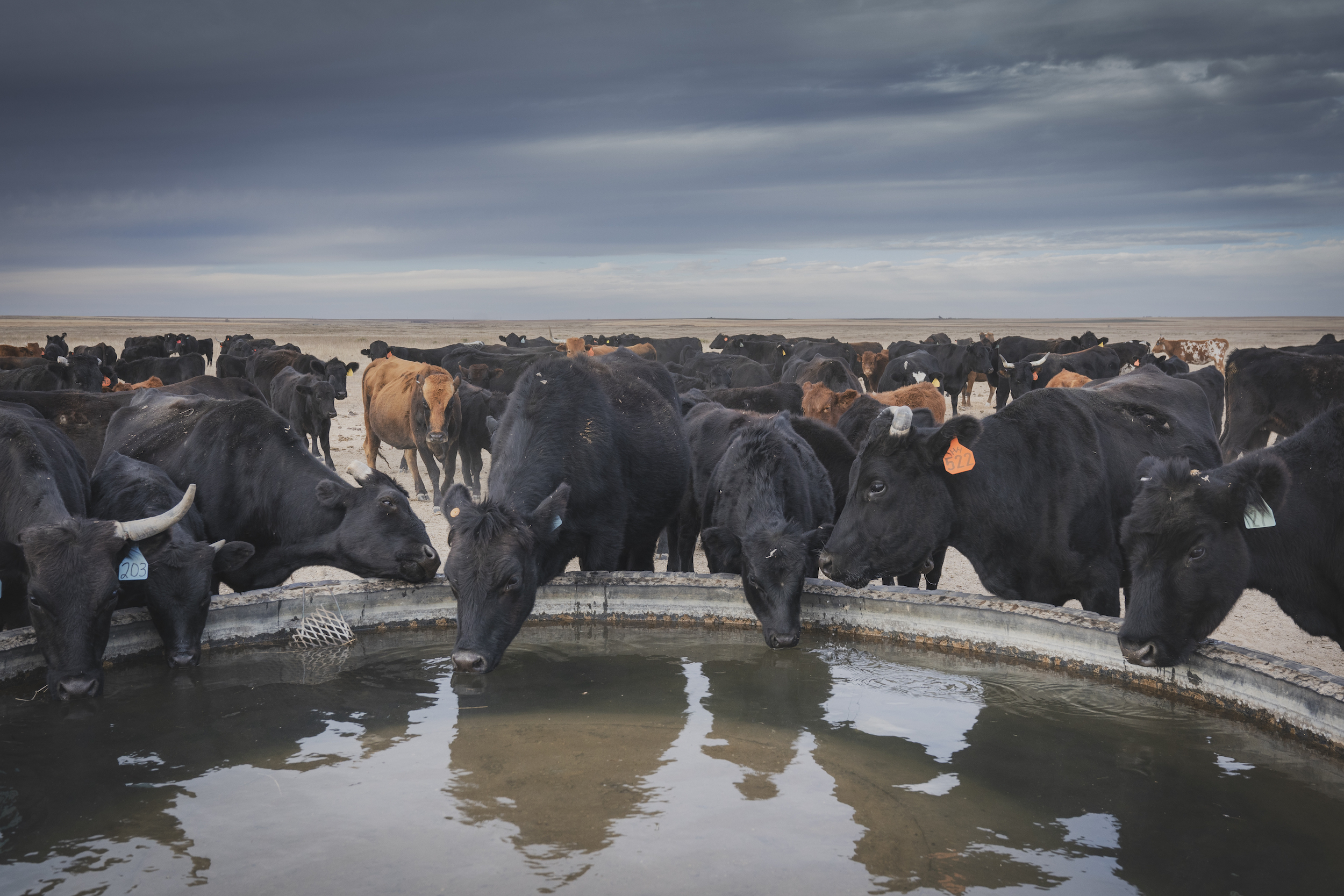
Building on Success
“All I was growing back then was dirt.”
That’s how Treg Hatcher felt about his family-owned cattle ranch in western Kansas before he enrolled in a Farm Bill conservation program that provides financial support and training for farmers, ranchers and forest landowners who want to be better stewards of the land. For Hatcher, that meant help buying water tanks to ensure his cattle have enough to drink and installing fences to do more rotational grazing.
The Farm Bill is America’s largest federal investment in the voluntary conservation, restoration and management of America’s private lands. It usually is funded to the tune of $6 billion annually. From incentivizing climate-smart agricultural practices to opening doors for permanent conservation through agricultural conservation easements, this critical, typically bipartisan legislation benefits every single state in the country. Learn why it’s one of our best opportunities to advance conservation in the United States and the policies we’d like to see in the next Farm Bill at nature.org/farmbill.
Create Your Own Conservation Legacy
What better legacy is there to leave than your commitment to protecting the Earth for future generations? Whether you are taking the first steps toward planning your estate or are in the process of updating your estate plan, The Nature Conservancy is here to help.
Download
Stories of TNC's work to protect Kansas's prairies and streams—and helping others manage their land with conservation in mind.
Download
Sign Up for E-News
Sign up to receive monthly conservation news and updates from Kansas. Get a preview of Kansas's Nature News email.
